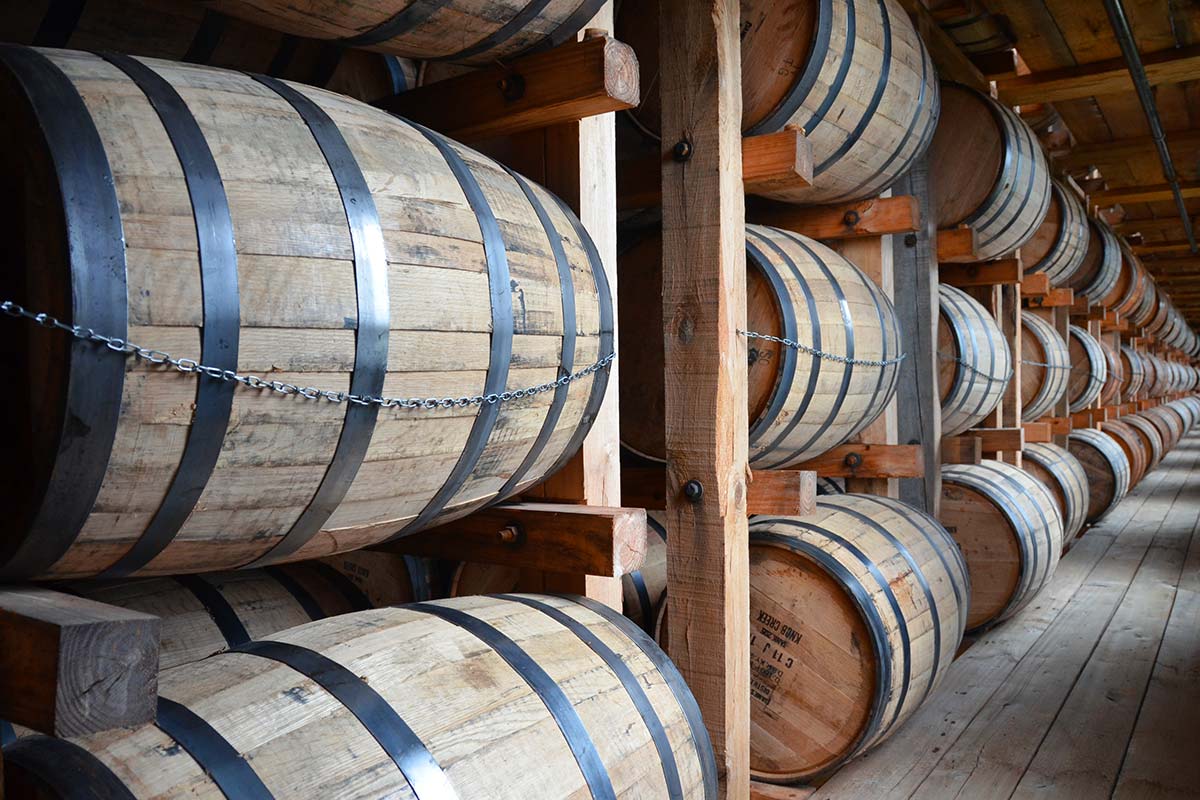September is National Bourbon Heritage Month, which gives us an excuse to spend a full 30 days drinking bourbon, talking about bourbon, and dipping into the ol’ mailbag to answer bourbon-related questions.
We’re often asked about the differences between bourbon and whiskey, when the reality is that bourbon is whiskey. It’s just a particular subset of the category, and one that’s governed by a strict set of rules. Let’s discuss.
What Is Bourbon?
Luckily, the list of things you have to do for your whiskey to be considered bourbon is pretty straightforward. According to the U.S. Federal Government, it must be:
- Produced in the United States
- Made of a grain mixture (mash) that is at least 51% corn
- Aged in new, charred oak barrels
- Distilled to no more than 160 proof (80% ABV)
- Entered into the barrel for aging at no more than 125 proof (62.5% ABV)
- Bottled at a minimum of 80 proof (40% ABV)
In order to be considered a “straight” bourbon, it must be aged for a minimum of two years, and contain no added coloring, flavoring, or other spirits blended in.
That’s pretty much it. We have the strictest legal requirements here in the States, but elsewhere in the world it’s kind of a crapshoot. In most European countries, for example, nearly any whiskey produced in the US can be marketed as bourbon.

What Does “Bottled in Bond” Mean?
“Bottled in Bond” is a fairly old-timey label affixed to bourbons that meet certain, slightly more specific requirements than those listed above. The term comes from the Bottled-in-Bond Act of 1897, which sought to regulate quality and prevent the use of adulterants in whiskey, a rampant practice at the time.
For a bourbon to be labeled as bottled in bond, it must be:
- The product of one distillation season (January to December)
- The product of one distiller at one distillery
- Aged in a federally bonded warehouse (under government supervision) for at least four years
- Bottled at precisely 100 proof.
Whiskeys other than bourbon—like rye whiskey, for example—can also be bottled in bond, as long as they’re produced in the United States.
What Is Tennessee Whiskey?
Finally, there’s an offshoot of bourbon that’s worth mentioning here: Tennessee whiskey. Tennessee whiskey nearly always meets the legal requirements to be labeled as bourbon, but due to a combination of branding (Jack Daniels would never deign to call itself a bourbon) and state pride, it rarely is.
According to Tennessee law, Tennessee whiskey must also undergo something called the “Lincoln County Process” prior to entering barrels for aging. This involves filtering or steeping the whiskey in maple charcoal chips, a method originally developed by the Jack Daniels distillery. While this is strictly enforced in-state, there’s no federal law that recognizes Tennessee whiskey as its own category.
So, there you have it. Bourbon isn’t some mystical type of booze that only a select few families in Kentucky can make—it’s just American whiskey made mostly from corn, and aged in new American oak barrels. Simple and delicious.
Photo: Wikipedia




Thank you for this information! I was just looking for this kind of information. It would be great if someone could share their personal experience and knowledge in the field of hard alcoholic beverages. I am very interested in understanding the variety and exceptional quality of spirits.